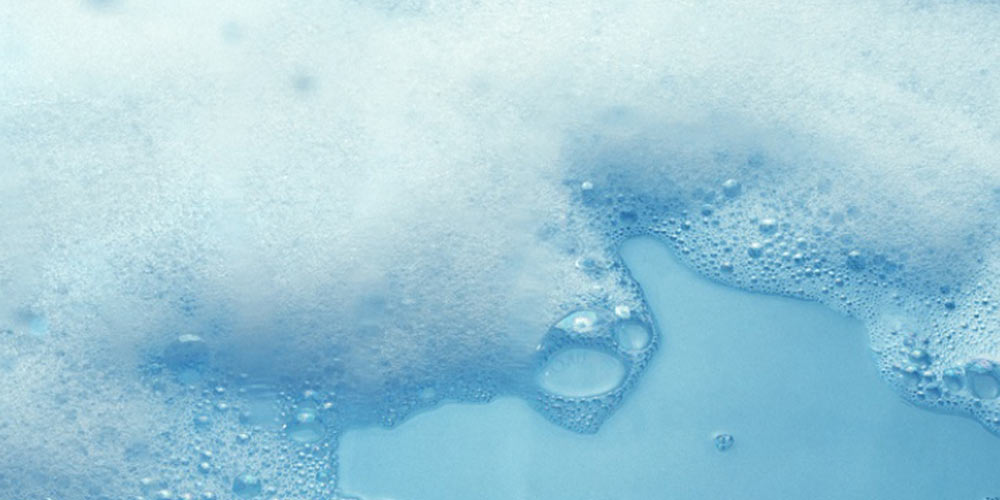Picking the Right Defoamer for Your Certain Application Requirements
Selecting the suitable defoamer for details application demands is a nuanced procedure that demands cautious consideration of several elements, such as the foam operating, medium, and kind problems. Comprehending the subtleties of defoamer efficiency-- including speed and persistence-- while additionally representing ecological and regulative variables is crucial. In addition, taking part in trials and speaking with manufacturers can offer beneficial insights. Nevertheless, navigating these intricacies can be challenging, and the repercussions of a poor selection may be significant. What approaches can be used to guarantee an ideal option?
Recognizing Foam Development
Foam formation occurs when gas is trapped within a liquid, creating a secure framework of bubbles. This phenomenon can considerably influence various industrial processes, especially in markets such as food production, drugs, and wastewater treatment. The presence of foam can hinder mixing, minimize product quality, and also result in operational inadequacies.
Foam commonly develops because of a combination of factors, including surface-active representatives, anxiety, and the characteristics of the liquid phase. Surfactants reduced the surface area tension of the liquid, promoting the development of bubbles that can integrate and stabilize. Frustration, whether from mechanical stirring or gas intro, enhances bubble development, bring about raised foam volume.
Comprehending the mechanics of foam development is vital for sectors aiming to optimize their processes. By recognizing the certain conditions that advertise foam generation, companies can carry out techniques to reduce its effects. This expertise lays the foundation for choosing appropriate defoaming representatives that efficiently target the distinct obstacles presented by foam in different applications. Subsequently, an extensive understanding of foam formation is crucial for enhancing effectiveness and keeping item integrity throughout different industries.
Kinds Of Defoamers Available
Numerous kinds of defoamers are offered to resolve the challenges postured by foam in commercial applications. defoamers. Broadly categorized, defoamers come under three groups: silicone-based, non-silicone-based, and natural defoamers
Silicone-based defoamers are renowned for their efficiency and security throughout a wide variety of temperatures and pH levels. They are typically made use of in applications where strong foam suppression is needed, such as in paints, finishes, and adhesives. Their reduced surface area tension enables rapid foam collapse.
Non-silicone-based defoamers, typically made from natural substances, supply a choice for applications conscious silicone deposits. These defoamers can be more separated right into polyether and ester kinds, each customized to fulfill specific solution requirements. Non-silicone defoamers are frequently made use of in food processing and individual treatment items because of their compatibility with different formulas.
Natural defoamers, stemmed from plant or animal sources, are gaining traction as a result of their environmentally friendly profile. These products are specifically appealing in applications where governing conformity and sustainability are extremely important, such as in agrochemicals and biotechnology.
Picking the right sort of defoamer is critical for maximizing efficiency and making certain compatibility with details applications.
Secret Application Considerations
When selecting a defoamer, it is important to think about the particular application demands to make sure ideal efficiency. defoamers. Various markets have distinctive demands, such as food handling, drugs, or wastewater treatment, and each application may require distinct defoaming properties
Trick elements to evaluate consist of the medium in which the defoamer will certainly be utilized, whether it is water-based, oil-based, or a combination thereof. The temperature level and pH degrees of the application can also significantly influence the effectiveness of a defoamer. Additionally, compatibility with various other chemicals present in the system is important to her comment is here stop negative responses that might jeopardize performance.
An additional crucial consideration is the frothing habits of the details system. Comprehending whether the foam creates rapidly or gradually can direct the option of a defoamer that targets the root cause effectively. The preferred speed of defoaming can influence the selection, as some applications require fast activity while others may tolerate slower defoaming procedures.
Lastly, regulative and environmental factors to consider must not be overlooked, specifically in industries with stringent conformity demands. Picking a defoamer that lines up with these variables guarantees both effectiveness and security in the application.

Performance Testing Methods
Evaluating the performance of a defoamer calls for an organized technique to testing that precisely measures its effectiveness in particular applications. Various performance testing approaches can be used to establish the ideal defoamer for a given solution.
One usual technique is the bubble test, which examines the defoamer's ability to lower foam quantity with time. This test involves creating a steady foam and after that including the defoamer to observe the rate of foam collapse. Another approach is the dynamic foam examination, where foam is produced under controlled problems to mimic real-world application circumstances. This technique offers understandings into just how the defoamer carries out under differing shear conditions.

Inevitably, choosing the proper efficiency testing technique relies on the specific application and the type of foam being dealt with. Each technique provides important data that can guide formulation adjustments and enhance the effectiveness of the defoamer in practical applications.
Best Practices for Selection


Next, think about the defoamer's efficiency in regards to rate of activity and persistence. A quick-acting defoamer may be necessary for procedures where quick foam reductions is critical, while a more persistent formulation could be needed for prolonged foam control. Additionally, evaluate the environmental influence of the defoamer, including its biodegradability and any kind of governing conformity needs.
Conduct tests with picked defoamers to identify their efficiency in real-world conditions. This step is essential to validate that the picked product meets performance expectations. Last but not least, talk to makers or vendors for technical support and assistance, as they can offer valuable understandings right into item formulas and application methods. By sticking to these ideal techniques, you can enhance foam control performance and guarantee the longevity of your procedures.
Final Thought
In summary, picking the suitable defoamer demands an extensive examination of various elements, consisting of foam type, medium, operating problems, and ecological considerations. Recognizing the unique qualities of like this foam development and the available defoamer alternatives is important.
Picking the appropriate defoamer for specific application needs is a nuanced process that requires mindful factor to consider of numerous variables, such as the foam tool, operating, and kind problems.Picking the try this out right defoamer is vital for achieving optimal efficiency in foam control applications. A quick-acting defoamer may be required for processes where fast foam reductions is crucial, while a much more consistent formulation might be required for prolonged foam control.In recap, picking the proper defoamer requires an extensive assessment of various factors, consisting of foam kind, medium, operating conditions, and ecological considerations. Comprehending the unique characteristics of foam development and the offered defoamer choices is essential.
 Jake Lloyd Then & Now!
Jake Lloyd Then & Now! Neve Campbell Then & Now!
Neve Campbell Then & Now! Alexa Vega Then & Now!
Alexa Vega Then & Now! Pauley Perrette Then & Now!
Pauley Perrette Then & Now! Heather Locklear Then & Now!
Heather Locklear Then & Now!